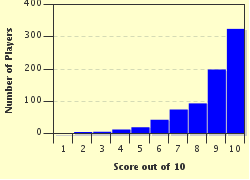Quiz Answer Key and Fun Facts
1. In what year did William the Conqueror invade England and usurp the crown at the Battle of Hastings?
2. On December 29th 1170, what famous churchman and former friend of the English king was murdered at Canterbury cathedral?
3. On June 15th 1215, King John of England signed what important charter that appeased a group of rebel barons but which later became the basis for England's statute law?
4. One of the most important dates in Scottish history is June 24th 1314. What landmark battle was won in 1314 that secured Scottish independence from the English?
5. In what year did Christopher Columbus set sail for the New World under the sponsorship of King Ferdinand and Queen Isabella of Spain?
6. In 1517, what impassioned friar nailed 95 theses to the church door at Wittenberg to find fault with the Papacy and the sale of indulgences?
7. In the heart of London close to St. Paul's Cathedral there stands a symbolic monument to the Great Fire of London. What year did this fire start, causing a dramatic rebuild of the city?
8. Arguably the most important U.S. historical date of the 18th century was the date that the Declaration of Independence was signed in Philadelphia. Which of the following is the correct date of the signing?
9. The War of 1812 was primarily contested by which two powerful countries?
10. The 20th century saw a huge loss of life on account of the two World Wars and conflicts in Vietnam and Korea. In what year did World War II end?
Source: Author
coachpauly
This quiz was reviewed by FunTrivia editor
bloomsby before going online.
Any errors found in FunTrivia content are routinely corrected through our feedback system.

